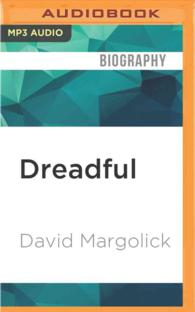Full Description
Too often in practice, there is a tendency to pathologize clients, requiring a diagnosis as part of the helping relationship. Suppose, however, that most of the client problems that social workers encounter have more to do with the vagaries of life and not with what clients are doing wrong. This powerful idea is the philosophy behind the strengths-based approaches to social work. This groundbreaking practice handbook takes this concept one step further, combining the different strengths-based approaches into an overarching model of solution-oriented social work for greater impact. The strengths perspective emphasizes client strengths, goal-setting, and a shared definition of positive outcome. Solution-focused therapy approaches ongoing problems when they have temporarily abated, amplifying exceptions as solutions. This natural but rarely explored pairing is one component in the challenging and effective practice framework presented here by the authors, two seasoned practitioners with over 50 years of combined experience. By integrating the most useful aspects of the major approaches, a step-by-step plan for action emerges. With this text in hand, you will:
- Integrate elements from the strengths perspective, solution-focused therapy, narrative therapy, and the strategic therapy of the Mental Research Institute (the MRI approach) into an effective and eclectic framework
- Build and practice your skills using case examples, transcripts, and practical advice
- Equip yourself with the tools you need to emphasize clients' strengths
- Challenge the diagnosis-first medical model of behavioral health care
- Collaborate with clients to get past thinking (first-order change), and more to acting "outside the box" (second-order change)
- Learn to work with a wide variety of clients, including individuals, groups, and families; involuntary clients; clients with severe mental illness; and clients in crisis
For any student or practitioner interested in working with clients towards collaborative and empowering change, this is the essential text.
Contents
PART I: STRENGTHS, SOLUTIONS, AND CHANGE: A THEORETICAL AND PRACTICAL INTRODUCTION
Introduction
1. Focusing on Client Strengths: Theoretical, Empirical, and Practical Considerations
2. A Framework for a Solution-Oriented Approach to Working with Client Strengths
PART II: THE ELEMENTS OF SOLUTION-ORIENTED SOCIAL WORK PRACTICE
3. Co-Constructing Collaborative Relationships with Clients
4. Listen to the Client's Story and in the Process Define and Deconstruct the Primary Presenting Problem(s) from the Client's Perspective: First Steps in a Solution-Oriented Assessment
5. Define the Outcome Goal(s) from the Client's Perspective: Further Steps in Solution-Oriented Assessment
6. Identify and Amplify Client Strengths: Using the Languages of Strengths and Solutions to Achieve Pattern Change
7. Intervene to Disrupt the Problem-Maintaining Patterns of First-Order Change to Achieve Second-Order Change: Further Steps to Pattern Change
8. Working with Client Strengths in a Deficit-Oriented Environment
9. Continuing the Conversation, Evaluating Practice, and Terminating with Clients
10. Cultural Diversity and Cultural Strengths: Assets for Solution-Building in Social Work Practice
PART III: TREATMENT ISSUES AND APPLICATONS
11. A Solution-Oriented Approach to Group Work
Gil Greene, Amy Carek, and Mo Yee Lee
12. Families and Couples: A Practical Guide for Facilitating Change
John Sebold
13. A Solution-Oriented Approach to Crisis Intervention
14. A Solution-Oriented Approach to Working with Persons with a Severe Mental Disability
Gil Greene, David Kondrat, and Mo Yee Lee
15. Concluding Comments: The Strengths and Common Factors Revolutions








